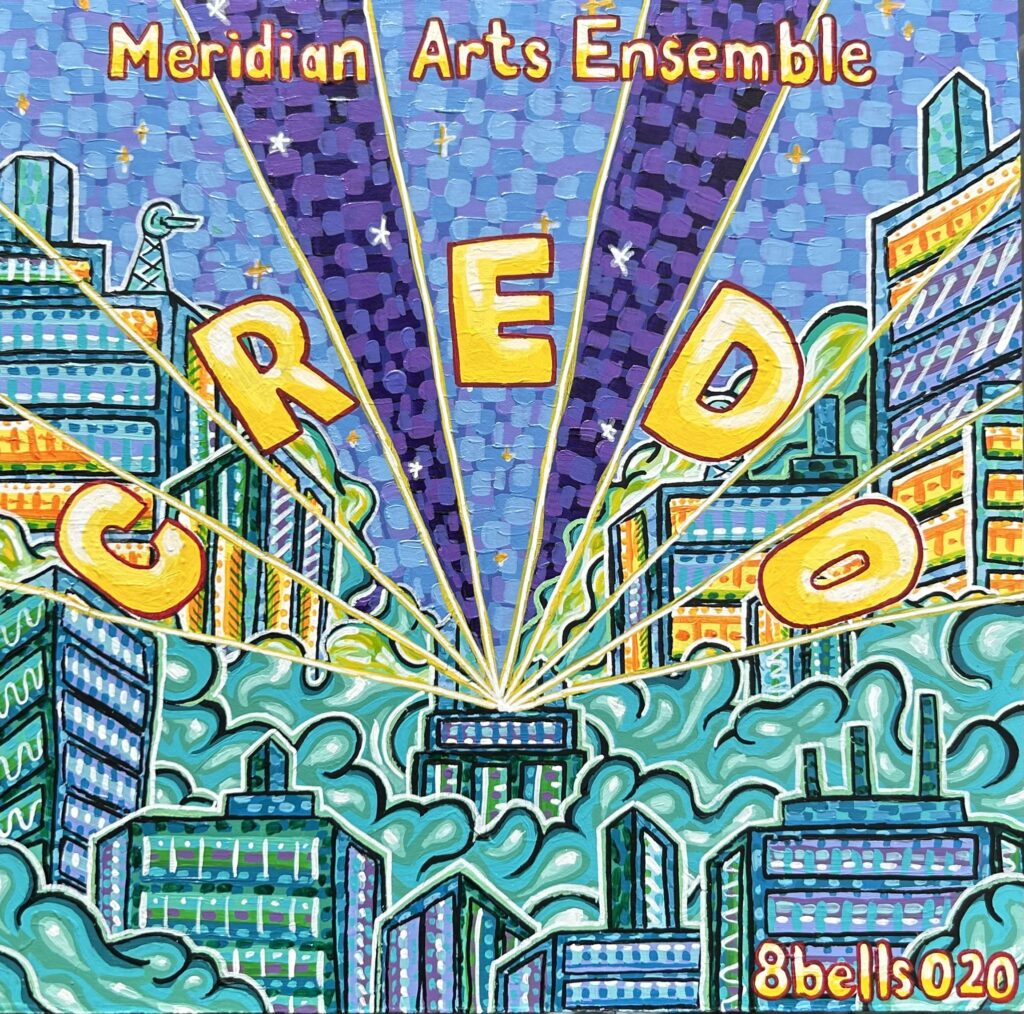Class Brass From Meridian Arts Ensemble
concert hall recording produces lively sound
When it comes to classical music, brass instruments have experienced, or, to put it more precisely, endured, a long march towards respectability over the past half century or so. Brass instruments played an increasingly prominent role in orchestral works by Bruckner or Mahler, but they really were not vouchsafed much solo literature until the latter half of the twentieth century. It was the French virtuoso Maurice Andre who first wielded his piccolo trumpet during the 1960s to transform it into a respectable solo instrument. No less a personage than Herbert von Karajan, the longtime conductor of the Berlin Philharmonic, recorded an album with Andre and declared, “He is not of this world!”
In North America, a bevy of soloists, including Rolf Smedvig, who succeeded Armando Ghitalla as first trumpet of the Boston Symphony before founding the Empire Brass Quintet in 1971, emerged to carry forth the torch for brass music. In 1970, Charles Dallenbach and Gene Watts founded the Canadian Brass Quintet, which, like the Empire Brass, released a number of impressive recordings and toured widely. Since then a number of other ensembles have appeared. Among them is the Meridian Arts Ensemble which is releasing a nifty new recording called Credo on November 15.
This ensemble was founded in 1987 and is based in New York. Its members are experienced musicians who have already received accolades from publications such as the New Yorker. They include Jon Nelson and Sycil Matthai on trumpet, Daniel Grabois on horn, Ben Herrington on trombone, and Tom Curry on tuba. What marks out Meridian Arts is its focus on contemporary music. This brass quintet has released a variety of recordings that include Renaissance music, but it clearly has an audacious streak that manifests itself on its latest effort. Its own credo, you could say, is not simply to perform transcriptions of Vivaldi and Handel but to venture into unexplored territory.
The centerpiece of its new album, which was recorded in June 2022 at the University of Buffalo in the Lippes Concert Hall of Slee Hall, is called “Credo for brass quintet.” It was composed by David Sanford. Sanford has written a variety of classical works and garnered numerous honors, including the Rome Prize. He was also the arranger for the cellist Matt Haimovitz’s imaginative 2010 jazz album Meeting of the Spirits.
I was eager to listen to Sanford’s “Credo” and it did not disappoint. It opens with some gentle thumping of the percussion and a call and response between a trumpet mouthpiece on the right and a trumpet on the left. Credo I--the first movement--gradually develops an immersive quality as the various instruments join in with the sonorous tuba serving as the pivot point. Credo II, which specifies a quarter note at 120 beats per minute (fast, in other words), has a hummingbird-like effect, as the muted trumpets play rapid trills in unison, displaying their virtuosity. Credo III begins with a more stentorian trumpet fanfare. But it proves to be more light-hearted fare than the initial fanfare had portended—a jolly tuba line resounds for much of the of the movement. The final movement—Credo IV—is specified at 180 beats per minute. This time the two trumpets get to shine, displaying their uncannily accurate intonation as they race through the opening stanzas. Throughout, the rapidity with which the performers enunciated their solos had a hallucinatory quality to it. It was a pleasure to listen to the recording of the Credo; I can only imagine how exciting a live performance of it would be to hear.
No less enjoyable after this foray into the present was a return to the past—a transcription of Haydn’s jaunty Feldpartie, which was originally composed for woodwind ensemble. Here Nelson and Matthai got a chance to shine on their piccolo trumpets. Once again, I was favorably impressed not only by their technical facility, but also their evident musicianship. Both tone and intonation were spot-on. Indeed, when it came to the entire ensemble, its unity of playing stood out. Precision and musicality are the hallmarks of this ensemble, which has mastered a wide range of repertoire.
The quality of the recording itself was also nothing to sneeze at. The engineers captured the acoustic space with enviable clarity as well as the balance between the performers. This is a recording that I intend to return to more than once. (Available on CD and streaming at 96/24. Release date Nov. 15th)












































